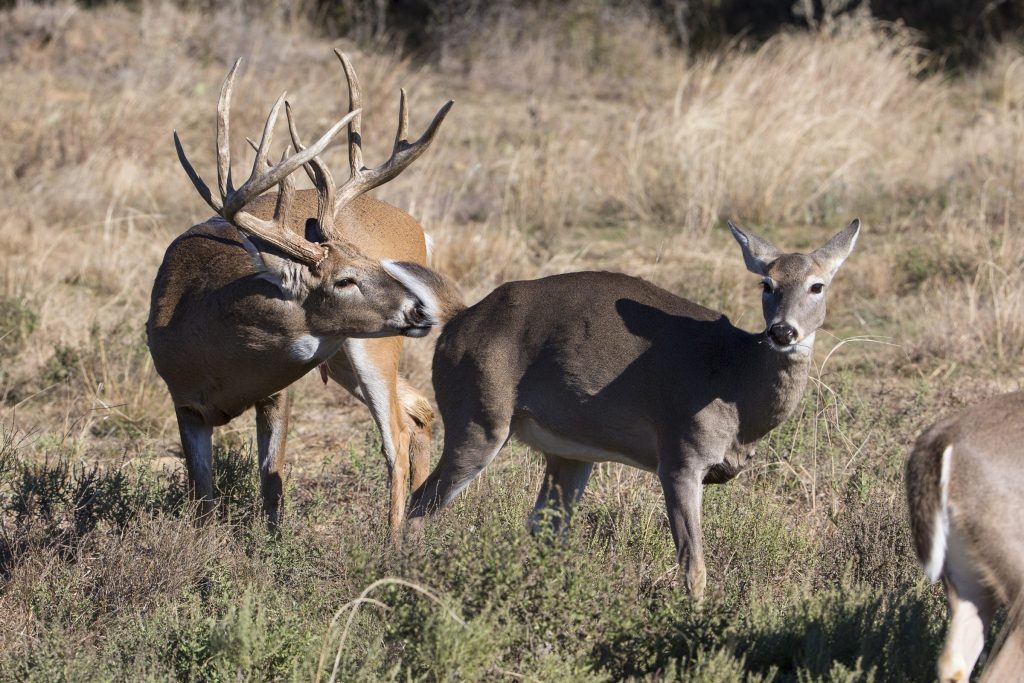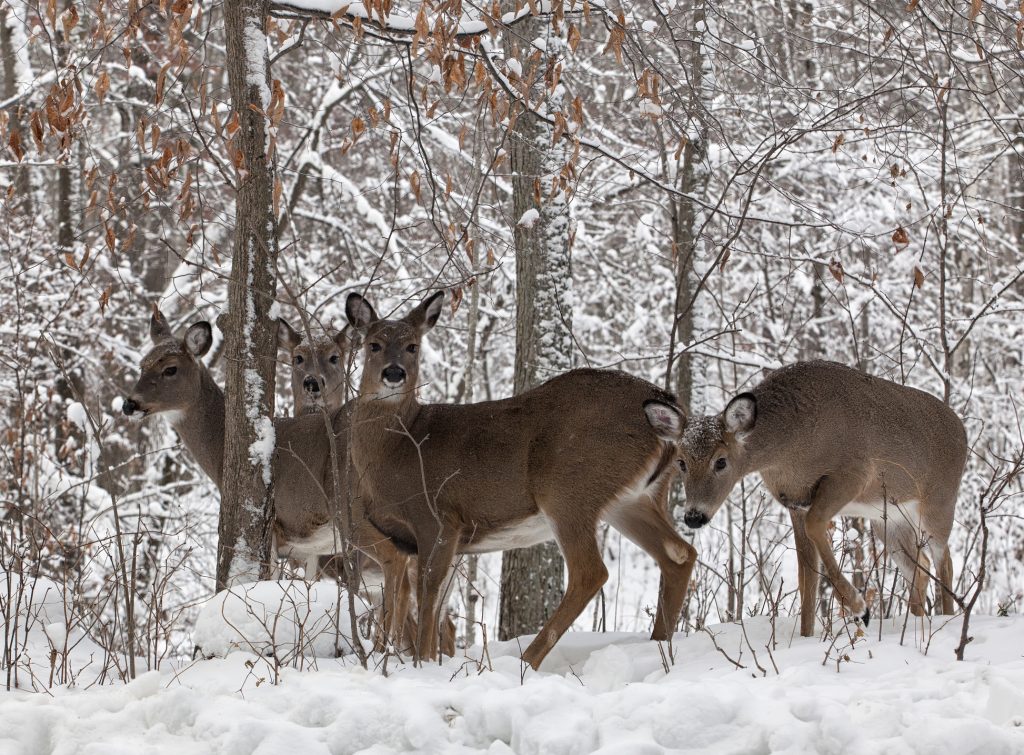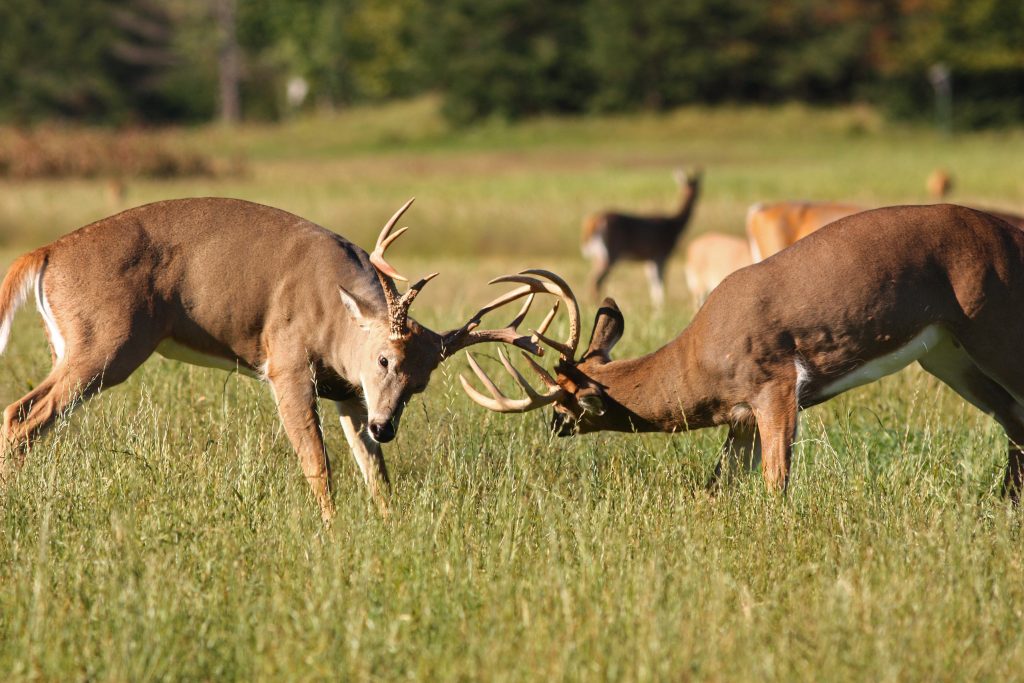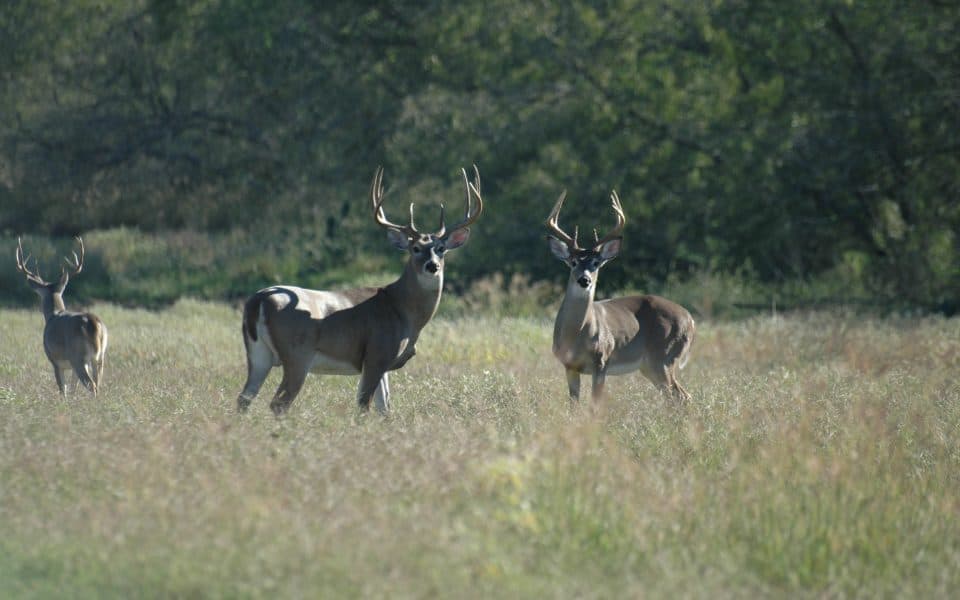Traditional lore tells us that white-tailed deer have an average home range size of about one square mile. That’s where you’re most likely to find your target buck; except when the rut hits and all bets are off as bucks sometimes leave home and strike out for parts unknown. If only it were that simple. Decades of research has shown us that one square mile is probably a pretty good average, but there’s a lot of variability. It has also shown us there’s a good deal of variability in the white-tailed deer home range between individual deer, depending on age, local conditions, and several other factors, which we’ll take a closer look at below.
Home Range Establishment
Before we do that, let’s explore how home range is established to begin with. A common strategy for does is sometimes referred to as the “rose petal effect.” Say a doe has a female fawn. Assuming both survive, they’re likely to stay together through the fawn’s first year (except during peak rut and when the doe gives birth the following spring). Eventually, the yearling will establish its own home range, usually close by and even overlapping that of its mother. If the home ranges of successive generations were plotted, the result might look like a rose. That’s an oversimplification because some does will be removed and replaced by others, but females typically don’t wander too far from their mother’s home range.
It’s different for boys. Some time in his first fall as a fawn, but more often as a yearling, a young buck will disperse from its natal home range. We don’t know the exact mechanism but it likely has something to do with intraspecific aggression. When his mom comes into estrous, older bucks will no longer tolerate his presence. That doesn’t entirely explain why yearling bucks may travel considerable distances (sometimes five or ten miles, sometimes much further) before settling into a new area. But it does help disperse the gene pool and prevent in-breeding. Once settled in, bucks usually, but not always remain within the same general area for the rest of their life… to an extent.

Mikael Males
Home Range Size
The size of a deer’s home range depends to some extent, though not entirely on how you define that term. The buck described in the opening passage spent his winters (at least three months) 15 miles away from where he spent his fall. We don’t know where he spent spring and summer but you could claim his home range encompassed both areas and everywhere in between.
Fortunately, we have a standard, though even it is a tad subjective. Wildlife biologists define home range as the geographic area within which a deer spends 90 percent of its time over the course of a year. Within that is a smaller core area, defined as where a deer spends more than 50 percent of its time during the year. I find those definitions to be a bit misleading as they tend to make the home range sound more important because of the higher number. A clearer definition of home range might be: the geographic range that a particular deer traveled in over most (90 percent) of the previous year. So, if you put a radio or satellite collar on a deer and plotted its location every hour of every day for a year, home range would be the geographic area where almost all of those dots occur, minus any radical movements outside (which we’ll get to). Core area then, is that portion of their home range where they spent (or spend) the majority of their time, and therefore most of the dots occur.
There’s usually a logical explanation for animal behavior, including how far a deer may travel over the course of a year. In simple terms it comes down to energy efficiency. Deer must expend energy to feed and avoid danger. The more they travel, the more energy they use and the more they expose themselves to danger. If food is abundant, there is a definite advantage to sticking close to home, where the deer are more familiar with their surroundings. If it’s scarce, they need to travel farther.

critterbiz
There’s a third variable to the energy equation because deer aren’t just concerned with eating and staying alive. They also need to procreate, and the need to breed can prove costly. Biologists have identified two different strategies bucks use to locate a mate. One is alternately referred to as a Levy walk or an excursion. Similar to finding food, it is considered more effective when resources – in this case, does – are scarce. The other, a Brownian walk, involves revisiting the same areas frequently, and is more efficient when a resource is stable.
That might help explain different home range sizes, except some bucks may use both strategies, at different times. Early in the rut, when estrus does are scarce, they must travel farther to find what they seek. During peak rut, their random walks cover much less ground, partly because they move very little when with a standing doe, and partly because they don’t have to travel as far to find another.
Age also factors in. Results from a Texas study found that yearlings and mature males were least likely to go on excursions during peak rut. In the case of yearlings, they’re less experienced, generally have smaller home ranges (once they’ve been established) and have less fat reserves, so the risks associated with venturing too far from home are relatively greater. Mature males, on the other hand, are the most experienced and should know where to find does. And as it turns out, they seemed to, as evidenced by their looping, or revisiting the same areas more often. That contradicts the concept of bucks leaving town during peak rut, which might be encouraging to those targeting a specific buck, especially a mature one. But not all bucks are alike.
Whitetail Deer Personalities
While we humans, at least some of us, like to put things into neat, logical terms, nature doesn’t always abide. Deer, like people, have different personalities; some are home bodies while others have a wanderlust. Gamekeepers editor Todd Amenrud related an example. “In 2012, my brother-in-law and I, harvested the two largest bucks (antler size) we had on our Ontario property,” he began. “During the year we ran several dozen cameras on about 640 acres. To our knowledge, the buck I killed never left an area of about 200 acres. He was a “homebody.” The other buck we had pictures of on almost all the cameras and our neighbors on all four sides also had pictures of him. We called him a “wanderer.”
Trying to tease out the selective advantages of each strategy is an interesting exercise. Each, under different situations must be advantageous, or the deer that are predisposed to use them would die out and fail to pass along that urge to future generations. Some of it may be nature’s way. Natural selection is a dynamic process of testing limits. Arctic nesting birds like snow geese arrive on the breeding grounds at different times. In years of early warm-up, early arrivals gain an advantage as their young are older and better fit to survive the coming fall and winter. When spring arrives late, early nesters suffer and late nesters thrive.
It’s also why peak rut in northern deer tends to be fairly synchronous. If fawns are born too early the following spring, there won’t be enough nutrition. Too late and they won’t be able to withstand their first winter. There are always a few early and late breeders whose genes pass along for a season or two but over the long term things tend to even out. Similarly, nomads and homebodies might each gain a brief advantage in one particular season, and lose it in another.

Kevin McCarthy
Buck Population
Breeding isn’t the only thing that influences seasonal changes in behavior, and how far a deer travels. Throughout the spring and summer, different bucks may have core areas very close together. As the days grow shorter and testosterone levels rise they become increasingly less tolerant of one another and begin shifting core areas. Population density may factor in as more deer need more space, and resources.
Summary
If you notice one common thread throughout the above explanation it’s the abundance of hedge words and phrases like, “sometimes, usually” and “more often.” Hunters want to be able to predict what a deer is going to do but they have a remarkable ability to thwart our efforts, which is part of the challenge. Instead of focusing on bucks, maybe you should put more attention on does. They generally have smaller, more consistent home ranges, especially if you provide them with the right habitat. Keep the ladies home and the gentlemen will come courting.
Join our weekly newsletter or subscribe to GameKeepers Magazine.
Your source for information, equipment, know-how, deals and discounts to help you get the most from every hard-earned moment in the field.









